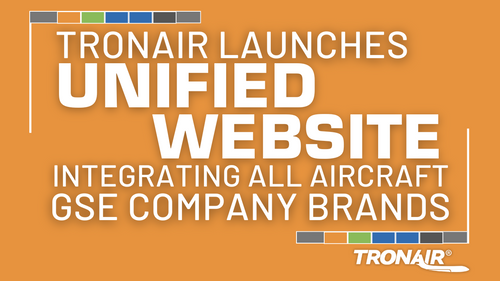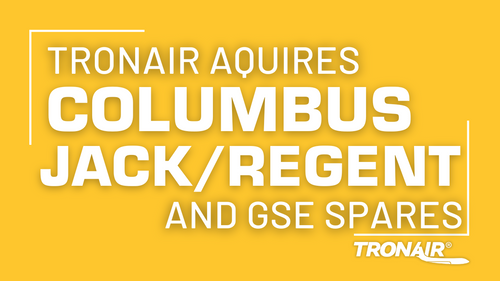
How to Plan for Successful Aircraft Equipment Operations
Resources & Technical ArticlesOn a daily basis, the hundreds of moving parts that involve successful aircraft equipment operations are constantly shifting and evolving. An airport is a busy place out on the flightline. Once airplanes land, aircraft equipment and the ground handlers that operate them must complete towing and servicing tasks in the shortest possible time to ensure they are ready for their next departure.
To find success in aircraft equipment operations, airports have to deal with the intricacies and complexities that go along with it. This can range anywhere from managing staff, directing GSE movement and having an accurate aircraft equipment list to adapting to daily situations, such as delays. Airport operations must utilize strategic planning for successful aircraft equipment operations to remain on budget and schedule.
At Tronair, we've come up with the three best tips for finding success in aircraft equipment and ground handling operations to improve efficiency, save on costs and ultimately make the lives of the people who operate airports easier. Keep reading to find out more.
1. Upgrading to an Efficient GSE Fleet
To be as efficient as possible in your aircraft equipment and ground handling operations, you'll need to update your GSE. Over time, GSE can become inoperative, less efficient or out of date – this is especially true for gas-powered GSE. If part of your strategy to maximize the success of your aircraft equipment operations includes effective cost savings, upgrading to an efficient GSE fleet should be your starting point. Choosing electric-powered or diesel-powered aircraft equipment, such as towbarless tugs from Tronair, can provide substantial cost savings from the very first day of use. Opting for fuel-efficient GSE can help airports reduce fuel consumption by upwards of 50%, which over time can add up to tens of thousands of dollars. With this extra cost savings, you can put the money into improving your strategy to achieve your other goals.
In addition to saving on costs, using electric aircraft equipment can prevent unnecessary idling times to help eliminate C02 emissions from the flightline. This is helpful for the environment and prevents ground handlers who operate equipment from consistently breathing in harmful emissions. If your strategy includes environmentally friendly objectives, investing in electric aircraft towing vehicles can help you reach your goals faster.
2. Utilizing GSE Fleet Telematics
Telematics refers to how telecommunication devices send, receive and store informatic data related to mobile and connected objects. As a system, telematics can help describe data and relate it to users for practical information and guidance. Commercial fleet management teams have adopted telematics fleet management systems due to their ability to improve business productivity, save valuable time and eliminate risks simultaneously. These connected technologies are essential to know what is happening with aircraft equipment and ground handling operations at any point in time.
Fleet telematics systems like EBIS GSE Fleet Management Software are essential for good ground handling operations because they help airports identify cost-saving opportunities and streamline operations through their weekly and monthly overview. In addition, airports can minimize downtime by tracking inspections on aircraft equipment and using aircraft equipment codes for easy fleet utilization. By scheduling necessary monthly maintenance through a fleet telematics aircraft equipment list, airports can avoid unscheduled repairs due to overuse. Ensuring the safety of ground handlers by monitoring their operating behavior is another benefit of utilizing telematics fleet management systems. To ensure ground handlers meet regulatory compliance, fleet telematics helps airports stay on top of their workers and ensure that all aircraft and equipment are always up to standards.
With fleet telematics, airports can make better business decisions with monthly and weekly analytical oversight into ground handling operations. This allows airports to build a better strategy around the collected data and focus on which areas need the most work.
3. Equipping Your Ground Handling Team for Success
A successful aircraft equipment strategy is more than just the GSE; it's the ground handlers who work with it every day to keep operations running. Understanding the behavior of ground handlers with fleet telematics or supervision oversight can drive the success of your ground handling operations way up.
Finding the areas that need improvement within the ground handling team enables airports to personalize their strategy to their workforce. Using telematics fleet management, airports can find accurate data on ground handlers, such as time logs, speed records and impact reports. Several ways an airport can utilize this information include:
- Updating training plans for ground handlers in problem areas
- Incorporating valuable data in performance reviews and reward systems
- Incentivizing good performance; further increasing the standards at which airports operate

Tronair is Your Number One Supplier of Aircraft Equipment to Make Ground Handling Operations a Success
At Tronair, we aim to offer all our customers the best possible aircraft equipment to better their ground handling operations for maximum efficiency. Whether you're looking for fleet telematics tools, electric GSE or helpful tips, we deliver our customers an unparalleled experience. Shop our high-quality selection of products today, and find the tools that will help cultivate a better experience for your ground handling workforce, customers and staff. Have a question or need a quote? Feel free to contact our customer service department for more information on our extensive line of products.
Request A Quote










